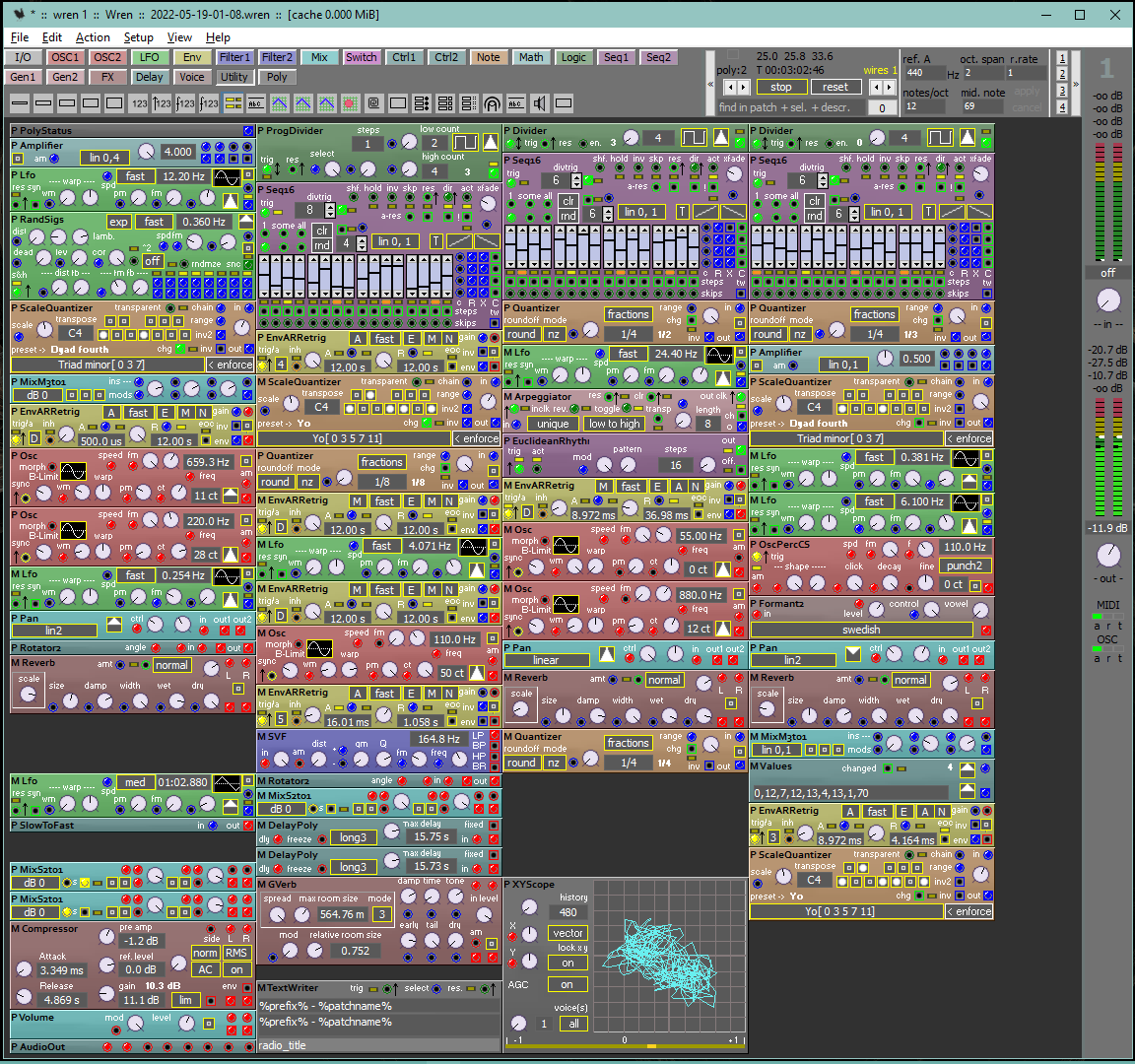|
Module info |
Wiki |
Blog |
FAQ |
|
Module info |
Wiki |
Blog |
FAQ |
|
current full version: 2023.2.8.0 current pre version: 2023.2.8.0
|

|
Wren is an open source modular software synthesizer for windows. I'm open for requests and for adding user contributions. Use the forum or the blog to reach me. To get the latest source code use the installer program, or do it from Wren itself trough it's help menu. For legal issues use my email address. |
Page created: